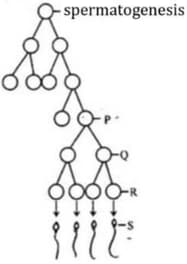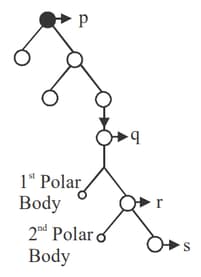EASY
Earn 100
In human females at the time of birth there are two million ova: how many of them normally reach maturity in the course of normal reproductive life?
(a)500
(b)1,000
(c)2,000
(d)5,000
50% studentsanswered this correctly
Important Questions on Human Reproductive System
EASY
EASY
EASY
Identify the cells represented as and in the given schematic representation of spermatogenesis.

EASY
EASY
EASY
MEDIUM
If in a normal Menstruating woman, menses occur April, what will be expected date of Ovulation?
HARD
MEDIUM
MEDIUM
Statement (S) : There is surge in Ovulatory phase.
Reason (R): surge induces the growth and maturation of follicles in the Ovary.
The correct answer is
MEDIUM
In the given diagram of human sperm, identify the functions of the labelled parts. and

MEDIUM
Identify the cells represented as and in the schematic representation of Oogenesis, shown below and choose the correct option.

EASY
EASY
MEDIUM
EASY
Arrange the phases of the menstrual cycle in the correct order.
Proliferative
Menstrual
Ovulatory
Secretory
EASY
EASY
MEDIUM
Study the following
| S.No | Cell | Formed by | State |
| I. | Spermatogonia | Mitosis | Diploid |
| II. | Spermatid | Meiosis I | Haploid |
| III. | Oogonia | Meiosis | Diploid |
| IV. | Secondary oocyte | Meiosis I | Haploid |
Among the above, correct combination are
EASY

